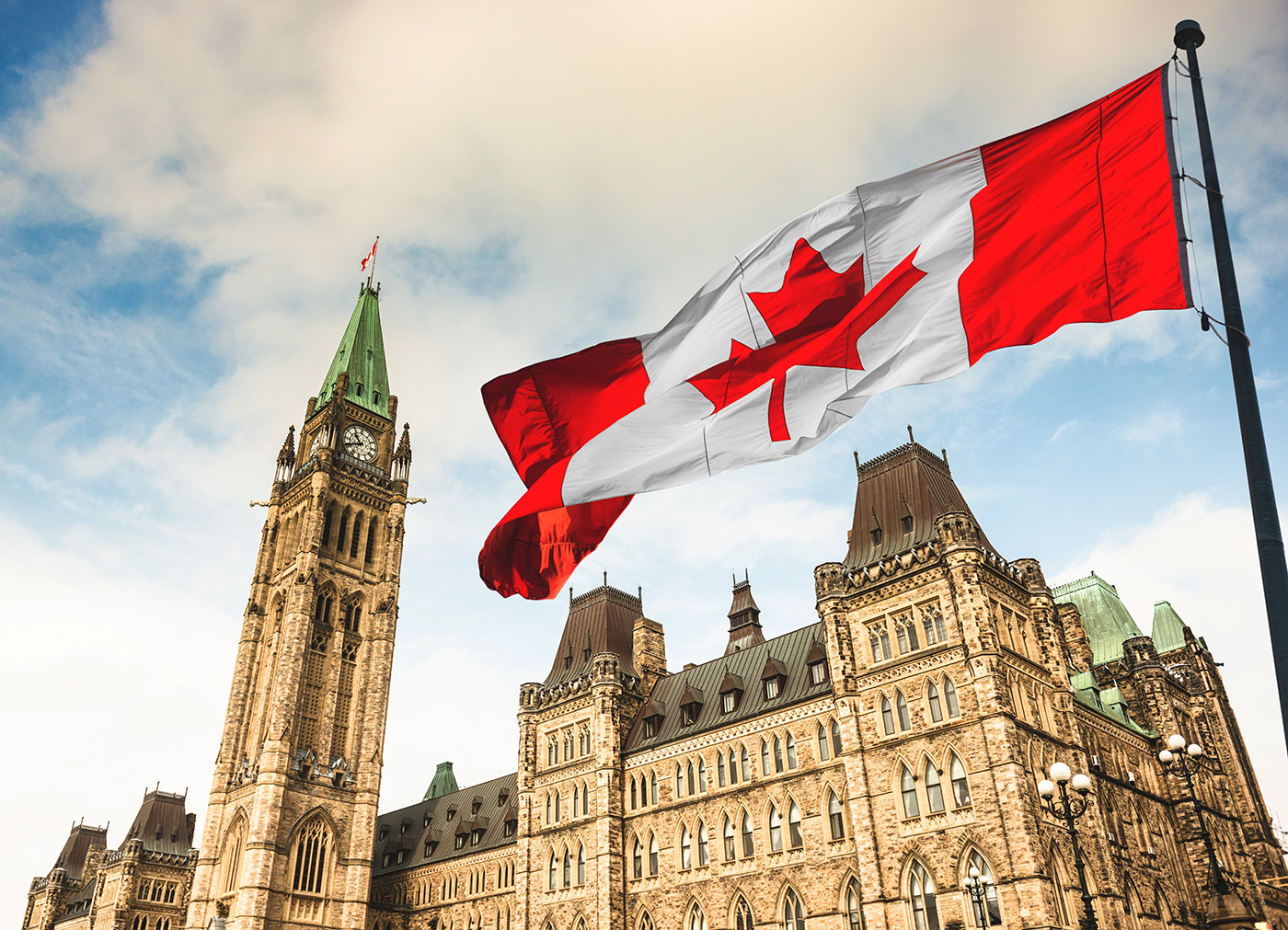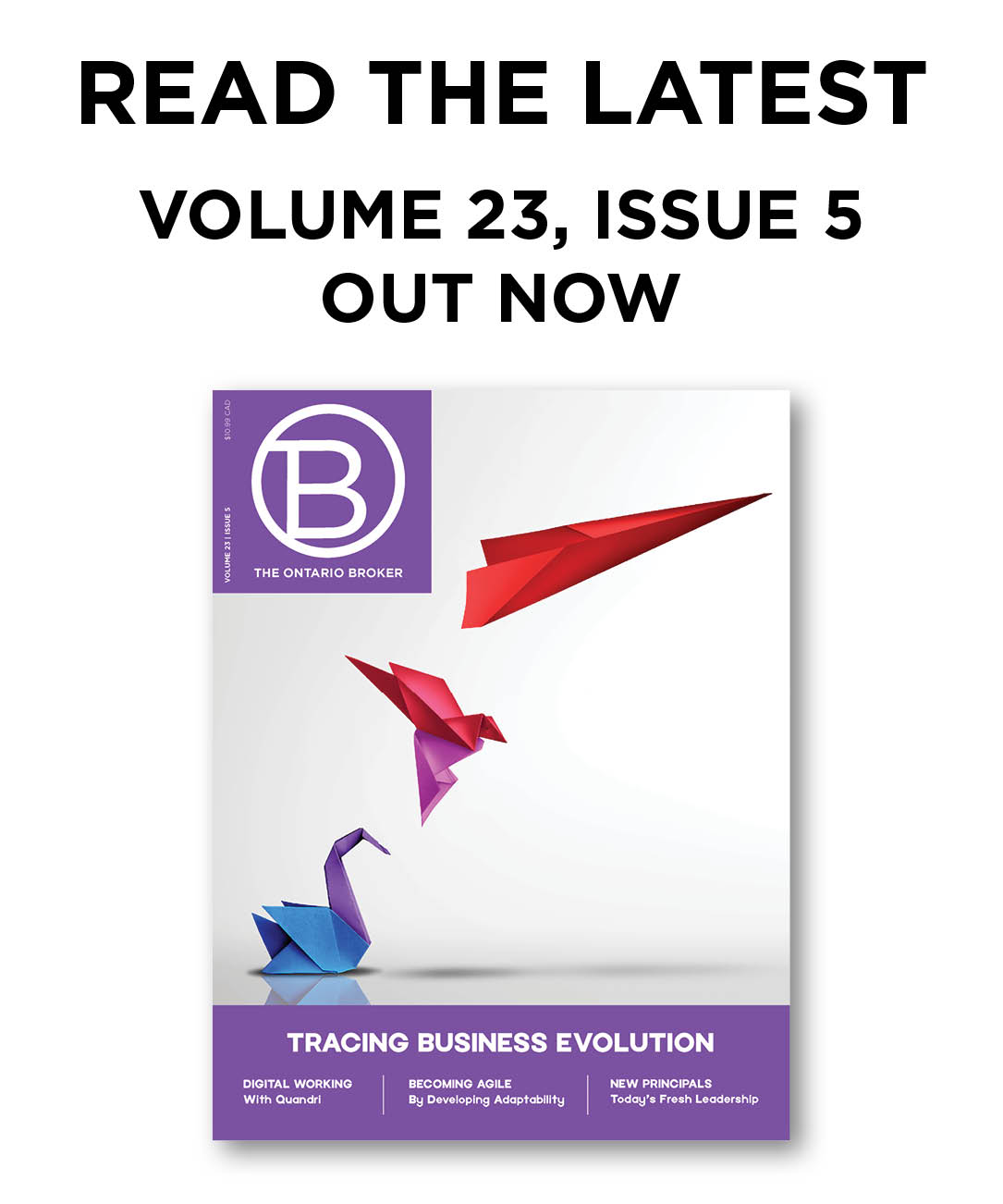
More and more brokers are expanding their reach across the country. So we brought together the leaders and supporters of our provincial broker associations to share the unique features of their province’s industry, regulatory changes and key info brokers should know if you’re contemplating expanding your license. While much of the day-to-day work from province to province is similar, it’s the little differences that give the tapestry of Canada’s broker channel its interesting character.

Chuck Byrne, Executive Director & COO, Insurance Brokers Association of British Columbia (IBABC)
British Columbia
Unique Challenges
Earthquake insurance has become a critical concern in B.C. For many years, brokers have been encouraging homeowners and businesses in at-risk areas to purchase coverage. However, market conditions have seen premiums and deductibles for earthquake insurance rise to the point where even those who have purchased the coverage are having to self-insure the most probable levels of damage through their deductibles in the event of an earthquake. Given current property values, particularly in high-risk earthquake areas, increased deductibles would place a heavy burden on the consumer. Adding to that burden are the strata (condo) properties where homeowners not only have their personal deductible to deal with, they’re also responsible for a portion of their strata building’s deductible.
Capacity is also an issue. Several major insurers chose to take restrictive action to manage their earthquake accumulation. There will be a devastating financial burden for affected residents, Canadian governments and taxpayers to fund recovery when a damaging earthquake occurs.
Pending Regulatory Changes
Businesses in B.C. that sell insurance incidental to their ordinary course of business will soon be required to take out a restricted insurance agent’s license. Regulators such as the Canadian Council of Insurance Regulators (CCIR) and the Canadian Insurance Services Regulatory Organizations (CISRO) have been recommending this as far back as 2007. The Insurance Council of B.C. is undertaking a consultation process with respect to pending changes to the licensing regime to develop a new licensing framework for restricted licensees. Currently in B.C., the incidental selling of insurance is addressed through exemptions in the Insurance Licensing Exemptions Regulation that effectively allow certain businesses to sell prescribed classes of insurance.
The Insurance Council of B.C. also introduced a rule this year that prohibits an insurance agency from engaging in insurance business for a strata corporation where that agency has common ownership with the corporation, business or other entity providing property management services to the strata corporation.
Licensing
In B.C., CAIB is tied to licensing. The Insurance Council of B.C. has approved CAIB as one of the education requirements for earning a licence. B.C. also has a public auto insurance system through the Insurance Corporation of B.C. so our Fundamentals of Insurance textbooks and exams include a portion on ICBC Autoplan. Newcomers to the broker profession are also required to complete the Insurance Council of B.C.’s Council Rules Course.
Brokers from other provinces can find information on licencing on our website and contact the Insurance Council of B.C. for more information.
Provincial Roundup
Fun Fact: Since the inaugural race of 1967, the City of Nanaimo, on Vancouver Island, has been home to the Great International World Championship Bathtub Race.
Underrated Landmark: The Kettle Valley Rail Trail, with its 650 km of connected pathways from Hope to Castegar for cycling and walking that include wooden trestle bridges and tunnels.
Pop Culture: A lot of pop culture starts here—Diana Krall’s The Girl in the Other Room, Michael Bublé’s Crazy Love and Generation X: Tales for an Accelerated Culture by Douglas Coupland.

Jhnel Weller-Hannaway, CEO, Insurance Brokers Association of Alberta (IBAA)
Alberta
Unique Challenges
Auto insurance continues to be one of the biggest challenges within Alberta’s insurance industry. The increasing costs of claims places a lot of pressure on insurance providers, which then has an adverse effect on consumers and the costs of premiums. Compared to other provinces, there’s less flexibility with the available product offerings carriers provide, which limits consumer choice. The IBAA has and will continue to actively advocate for consumer choice and increased product flexibility at the governmental level.
Another unique and significant challenge is insurance coverage for commercial trucking. Obtaining reasonable and affordable coverage as a new truck driver within our province is extremely difficult. One of the main driving forces behind this unavailability is the Mandatory Entry Level Training (MELT) program, which prepares new drivers to operate safely on Alberta’s roadways. Unlike similar programs in other provinces, the MELT training program is inadequate, less comprehensive and more costly.
Our province also routinely deals with catastrophic losses whether in the form of fire, hail and floods. Although hail occurs across Canada, its frequency and the high costs of damage are unique to Alberta. The challenge insurance carriers face is getting the cost of reinsurance down as the frequency of claims puts pressure on the industry.
Pending Regulatory Changes
A rate “pause” has been in effect since January 2023 that’s set to expire at the end of the current year. Historically, rate freezes or rate caps aren’t long-term solutions and usually have an adverse effect on consumers with many still experiencing rate increases due to limited coverage availability. The IBAA will always be a strong advocate for both legislative and regulatory consumer-focused auto reform because only then will we see lasting changes in the auto industry. We remain committed to working on and with all stakeholders to find sustainable solutions through collaborative effort.
Licensing
A unique feature of our auto insurance industry that out-of-province brokers will need to know about before getting licensed is Alberta’s grid rating program. The program was developed to establish the maximum premium rate insurers can charge for basic mandatory auto insurance coverage. Mandatory auto insurance includes coverage for direct compensation property damage (DCPD), third-party liability, both bodily injury and property damage tort, and accident benefits. The individual’s insurance company sets the DCPD rates while the Automobile Insurance Rate Board (AIRB) sets third-party liability and accident benefits rates. Existing brokers wanting to get licensed in Alberta should contact the Alberta Insurance Council where you’re required to obtain a certificate of authority for the class of license you wish to transact. For additional guidance on the options available, visit IBAA’s website or contact our education department directly at education@ibaa.ca.
Provincial Roundup
Fun Fact: John Carter Callaghan of the University of Alberta performed Canada’s first open heart surgery in 1956.
Underrated Landmark: Red Rock Canyon, located in Waterton Lakes National Park in Waterton Park.
Pop Culture: The TV series “The Last of Us” was filmed in Alberta—original release date January 2023.

Derek Lothian, President & CEO, Insurance Brokers Association of Saskatchewan (IBAS)
Saskatchewan
Unique Challenges
The dynamics of the Saskatchewan marketplace are fundamentally different than any other province or territory in Canada. We’re one of the North American jurisdictions with a Crown-owned insurance company that participates in segments of the P&C sector other than auto. This, coupled with the distribution of public auto coverage primarily through brokerages, has resulted in some distinct benefits and some unique challenges.
Perhaps the most prominent impact has been the concentration of premiums. While there are roughly 100 carriers that write property insurance in Saskatchewan, in 2021, the top three wrote 57% of the entire market. By comparison, the top three insurers in Alberta wrote less than 27% of the property market that same year. Given our relative size, that has dissuaded some insurance companies that are prominent elsewhere in Canada to deploy capital here, which in turn has limited insurer options particularly for small, independent brokerages—of which there are many. IBAS’s membership still encompasses 160 unique brokerage businesses operating in more than 250 different communities across the province.
Pending Regulatory Changes
We continue to monitor efforts by the Canadian Insurance Services Regulatory Organizations (CISRO) to explore the harmonization of licensing requirements for the P&C insurance industry. Although IBAS has been supportive of the project as a means of reducing red tape for interprovincial brokerages, we have become concerned by what appears to be growing fragmentation amongst provincial regulators.
Some of that misalignment was evident through the pandemic when CISRO issued an edict around best terms pricing that was ultimately adopted by only a few regulators. IBAS has been one of most vocal organizations in Canada on this file. While we understand and resonate with why regulators have eyed phasing out the practice on the composition of subscription policies, there would be major unintended consequences if not done slowly, carefully and through the unique lens of the Saskatchewan marketplace. We’ve been successful advocating that message and don’t believe there’s any imminent action in this province, but it’s something we keep our eye on.
Licensing
With a government-owned auto insurance system, there are nuances to both personal and commercial brokering. That’s why all new brokers in Saskatchewan must complete the educational requirements to hold a Restricted Auto licence. Within IBAS, this consists of either the Auto Part I (Basic) course or the SGI New Issuer Training program, the IBAS Auto Part 2 (Extension) course, and a bylaws exam. There are also many economically important industries and risks here that aren’t easily placed with traditional insurers.
We try to treat members of our sister associations like we treat our own members—and we’re pleased to be a concierge for advice, introductions to council and other educational resources. So if this is on a broker’s radar, feel free to reach out to any of our staff. Because of how contextually and case-by-case our regulator tends to view out-of-province credentials, however, we encourage brokers to reach out directly to the General Insurance Council of Saskatchewan.
Provincial Roundup
Fun Fact: Saskatchewan has produced more NHLers per capita than any other province.
Underrated Landmark: The world-class Remai Art Gallery in Saskatoon—named a global, can’t-miss place to see by The New York Times.
Pop Culture: The music of Colter Wall, son of former Premier Brad Wall and one of the best songwriters to come out of Canada in the last 25 years—just ask his most famous fan, Jason Mamoa.

Grant Wainikka, CEO, Insurance Brokers Association of Manitoba (IBAM)
Manitoba
Unique Challenges
Manitoba has government-run, public auto insurance—Manitoba Public Insurance (MPI)—and all Manitoba drivers must purchase Basic Auto insurance from the crown corporation. MPI is launching online services for their auto insurance products, which is placing added demands and presenting opportunities for brokerages across Manitoba. IBAM remains at the forefront of these discussions to ensure our members’ voices are heard and consumers continue to have protection and choice when purchasing auto insurance.
Although the weather has cooperated in 2023, much of southern Manitoba is in a flood plain and some communities and farmsteads are at a higher risk for overland flooding. There’s opportunity to improve access and bring more consistency to this suite of products.
Licensing
IBAM offers three avenues to start your career in the insurance industry:
Auto Broker: A licencing program where successful students achieve the first part of their Auto-Only licence
Fundamentals of Insurance (FOI): An entry level course geared to those new to the industry to get their level one licence
Canadian Accredited Insurance Broker (CAIB) 1: A nationally accredited course that starts applicants along the path of obtaining their level one licence
Upon successful completion of any of these courses, interested applicants must then become sponsored by a brokerage and complete an auto-specific course, Insurance Work Station (IWS) training, through IBAM or MPI, in order to transact business in a brokerage selling auto insurance to the general public. The IBAM and Insurance Council of Manitoba websites are the best sources for licensing in Manitoba. IBAM can help with the courses needed to obtain a license in Manitoba, but license issuing is handled by ICM.
Provincial Roundup
Fun Fact: There are over 100,000 lakes in Manitoba, including three of the largest lakes in Canada.
Underrated Landmark: The giant Viking statue in Gimli—be sure to check out Islendingadagurinn (the Islandic Festival) if you’re ever here in early August.
Pop Culture: Neil Young, arguably the best songwriter of all time, grew up in Winnipeg. Also, if sauce counts, Honey Dill is from Manitoba and it’s the best and only sauce anyone should be eating with chicken fingers.

Éric Manseau, Directeur Général, Regroupement des Cabinets de Courtage D’Assurance du Québec (RCCAQ)
Quebec
Unique Challenges
The Quebéc market remains highly competitive. Direct insurers are very present and hold a very large market share, particularly in personal lines, around 65%. The challenge for brokerages and their insurer partners is to win back market share in this segment. To boost their competitiveness, a number of brokerages have embarked on digital transformations and are adopting various business solutions. RCCAQ received a $3.7 million grant from the Government of Quebéc to support brokerages during this technological transition, which is key to winning back market share.
RCCAQ has also put in place a platform for brokerages aimed at generating business opportunities for personal lines clients (demano.ca). By answering a short questionnaire, consumers can obtain a quote quickly and efficiently. They are then automatically referred to a participating brokerage firm, which ensures that the products meet their needs.
Pending Regulatory Changes
Since June, the law amending Quebéc’s Charter of the French Language (Bill 96) has raised concerns. As part of the changes, all contracts must be initially sent to consumers in French. If requested, an English version can be provided. Thanks to lobbying by the RCCAQ and other stakeholders, a number of exceptions were written into the new legislation. As a result, consumers can be provided with an insurance policy exclusively in English, especially if it has no equivalent in French in Quebéc, is issued outside Quebéc or isn’t widely distributed in Quebéc. The RCCAQ continues to lobby the provincial government for additional clarifications to these exceptions.
Licensing
As mentioned previously, direct insurers have a highly visible presence in Quebéc. Expect to see these competitors everywhere you look—TV, billboards, radio and online. Since Quebéc has a no-fault insurance regime in place since 1978, newcomers can expect to see much lower auto insurance premiums in Quebéc, compared to other Canadian provinces.
You can find information on getting licensed in Quebéc on the Autorité des marchés financiers (AMF) site.
Provincial Roundup
Fun Fact: The Château Frontenac in Quebéc City is considered the world’s most photographed hotel.
Underrated Landmark: Magdalen Islands—forming an archipelago in the middle of the Gulf of St. Lawrence, the Magdalen Islands are known for their breath-taking scenery and super-friendly residents.
Pop Culture: You simply have to try poutine topped with duck or foie gras!

Becci Taylor, Executive Director, Insurance Brokers Association of New Brunswick (IBANB)
New Brunswick
Unique Challenges
One of the biggest challenges for insurance brokers in New Brunswick is employment, recruitment and retention of staff. The insurance industry is aging out, with a huge number of workers facing retirement. Recruiting new talent is a challenge as insurance doesn’t top the list of opportunities for young people or college graduates seeking employment, creating a record number of unfilled jobs in the industry. Employers who don’t prioritize employee experience or adapt to the changes brought about in a post-COVID workplace, like hybrid work environments, may lose staff to employers who adapt.
Pending Regulatory Changes
In February, the Financial and Consumer Services Commission (FCNB) issued the final versions of two new rules: Rule INS-001 – Insurance Intermediaries Licensing and Obligations and Rule INS-002 – Insurance Fees. The New Rules significantly overhaul the licensing regime for intermediaries by, among other things, creating new license classes, a new licensing regime to allow agencies, adjusting firms and managing general agents to act as licenced intermediaries and a new licensing regime for restricted insurance representatives.
Rule 001 creates new licence classes. For example a person who held a life, accident and sickness agent licence now holds a life insurance agent licence. Similarly, a class I agent licence is now known as a level I general insurance agent licence. For the most part, license classes were automatically updated when the Rule came into force without any action on the part of licensees. However, licensees who held a class II resident agent licence or a non-resident agent or broker license (other than a life insurance agent or broker licence) must request a general insurance agent licence (level 1, 2 or 3) upon their next renewal and must provide details of their qualifications and educational requirements.
Licensing
Currently, FCNB, which issue insurance licenses in New Brunswick, requires only proof of successfully passing either the Fundamentals of Insurance qualification or the Canadian Accredited Insurance Broker (CAIB) qualification level 1 in order to obtain a Level 1 license. If you require information specific to insurance licenses in the province, visit the FCNB insurance licenses webpage where you can learn how to apply, and reference the Insurance Act and Regulations.
Provincial Roundup
Fun Fact: New Brunswick is Canada’s only officially bilingual province—English and French have been the province’s official languages since 1969.
Underrated Landmark: New Brunswick has access to the Bay of Fundy which has the highest tides on earth and is one of the most accessible viewing areas for marine life in the world including 15 species of whales.
Pop Culture: Fredericton’s Willie O’Ree was the first black player in the NHL and is featured in the New Brunswick Sports Hall of Fame.

Karen Doiron, Secretary, Insurance Brokers Association of Prince Edward Island (IBAPEI)
Prince Edward Island
Unique Challenges
IBAPEI doesn’t have a physical office, and the staff are volunteers. I’ve been involved since 2004, I served as President from 2007–2009 and have been Secretary ever since.
The landscape of the PEI broker is drastically changing with all the M&A activity this year. We were small to begin with but are now even smaller. IBAPEI proudly boasts that we have 100% of the brokerages in PEI as members. That was 14 brokerages, but with M&A activity over the past few years, that number is now down to 6 brokerage owners.
The PEI population is growing but sits at approximately 175,000—that’s not a lot of insurance customers to share with the insurance industry. Because of our small size, we’re often last to get rating engines updated or problems fixed. Size does matter, the bigger you are the quicker you get attention. The population growth is mainly newcomers to Canada and immigration growth which presents its own challenges (foreign drivers, new businesses). And, of course, infrastructure hasn’t kept pace with growth, adding an additional burden. On the flip side, our small size allows us to know our customers better and provides an opportunity to get involved in our communities.
Pending Regulatory Changes
The sharing economy has made for several recent changes in regulations for ridesharing, car-sharing, short-term home rentals and electric kick scooter rentals. We’re catching up to the rest of Canada with regards to photo radar. The highway traffic act was updated in 2021 to enable the use of photo radar—the rollout of the technology, which would help police crackdown on excessive speeding, is happening this year.
Licensing
In P.E.I. your insurance license is called a Certificate of Authority. It’s issued for a two-year term. You’ll need an insurance company to sponsor you. Although the P.E.I. Government has no CE requirement to maintain your license, many brokerages still require their staff to do a certain number of hours of education. If a broker is licensed in another province and are in good standing, they can obtain a P.E.I. license by completing an application—no exam is required. However, if a person has no license and wants to be licensed in P.E.I., they must write a licensing exam. If they have questions, I’m always available to assist, kdoiron@cooke.ca.
Provincial Roundup
Fun Fact: You can drive from tip to tip in 4 hours, but there’s lots to see and do along the way, so who wouldn’t rather take their time?
Underrated Landmark: Victoria-by-the-Sea is a bustling hub of cultural activity masquerading as a tiny seaside village. This small community has galleries, eclectic shops, refreshing eateries and one of the Island’s most cherished community theatres, Victoria Playhouse.
Pop Culture: We have some famous musicians: Stompin’ Tom Connors, Gene MacLellan, Haywire and Paper Lions. And, of course, Anne of Green Gables by Lucy Maud Montgomery helped put PEI on the map.

Keri Foley, Professional Development/Marketing Coordinator, Insurance Brokers Association of Nova Scotia (IBANS) & Insurance Brokers Association of Newfoundland (IBAN)
Nova Scotia
Unique Challenges
Our broker associations are structured a bit differently on the east coast. We don’t have CEOs, just two staff members who work for both the Nova Scotia and Newfoundland Associations —myself and my colleague, Debbie Paul, Member Services Coordinator.
In Nova Scotia, climate is a huge concern. We had a major hurricane, wildfires and flooding all within eight months, which isn’t common. A shrinking membership base due to M&A activity is a huge challenge for us on the east coast.
Pending Regulatory Changes
Our Auto Review in Nova Scotia started pre-2020 and feedback was provided by industry and consumers in February. We’re waiting on the final announcement from the government.
Licensing
IBANS does not handle any applications or changes to licensing. For specific questions about licensing, we ask that you contact the Office of the Superintendent of Insurance at ininst@novascotia.ca. In Nova Scotia, there are three levels of licensing:
Level 1 – These brokers require supervision by a higher level broker. Individuals must successfully complete the FOI or CAIB 1 module.
Level 2 – To qualify for a Level 2 license individuals must have previously held a Level 1 license, or have the equivalent qualifications acceptable to the Superintendent of Insurance, and successfully complete the FOI or CAIB 1 module, as well as CAIB 2 and CAIB 3 modules.
Level 3 – To qualify for a Level 3 license individuals must have previously held a Level 2 license, or have the equivalent qualifications; and successfully complete the FOI or CAIB 1 module, as well as CAIB 2, CAIB 3 and CAIB 4 modules.
We offer free practice exams for CAIB students. In any Atlantic province, CE credits aren’t recognized. However, we still have larger than average attendance at our webinars and courses.
Provincial Roundup
Fun Fact: Dartmouth is home to the world’s most famous talking Christmas Tree, Woody.
Underrated Landmark: Georges Island—a National Historic Site located in Halifax Harbour.
Pop Culture: Peace by Chocolate was formed in Antigonish, NS and their story of resilience led to a book, movie and international recognition.

Keri Foley, Professional Development/Marketing Coordinator, Insurance Brokers Association of Nova Scotia (IBANS) & Insurance Brokers Association of Newfoundland (IBAN)
Newfoundland
Unique Challenges
Our broker associations are structured a bit differently on the east coast. We don’t have CEOs, just two staff members who work for both the Nova Scotia and Newfoundland Associations.
The province has a very small pool of insurance companies, limiting competition and availability of product.
Pending Regulatory Changes
IBAN supports the Canadian Federation of Independent Businesses petition to support the elimination of the 15% retail sales tax on insurance for insurance products used by businesses.
Licensing
In Newfoundland, the Licensing structure and requirements is the same as in Newfoundland. And again, same as Nova Scotia, there are no CE credits required to maintain your license and we have free practice exams for all CAIB modules.
Provincial Roundup
Fun Fact: Newfoundlanders and Labradorians not only have a unique accent, they have their own slang including “Whaddya at?” (How are you) and “Yes b’y” (to show agreement).
Underrated Landmark: Fogo Island—The Fogo Island Inn sits on an island, off an island, at one of the four corners of the Earth.
Pop Culture: Kelly Loder, Canada’s Got Talent, Runner Up in 2022





